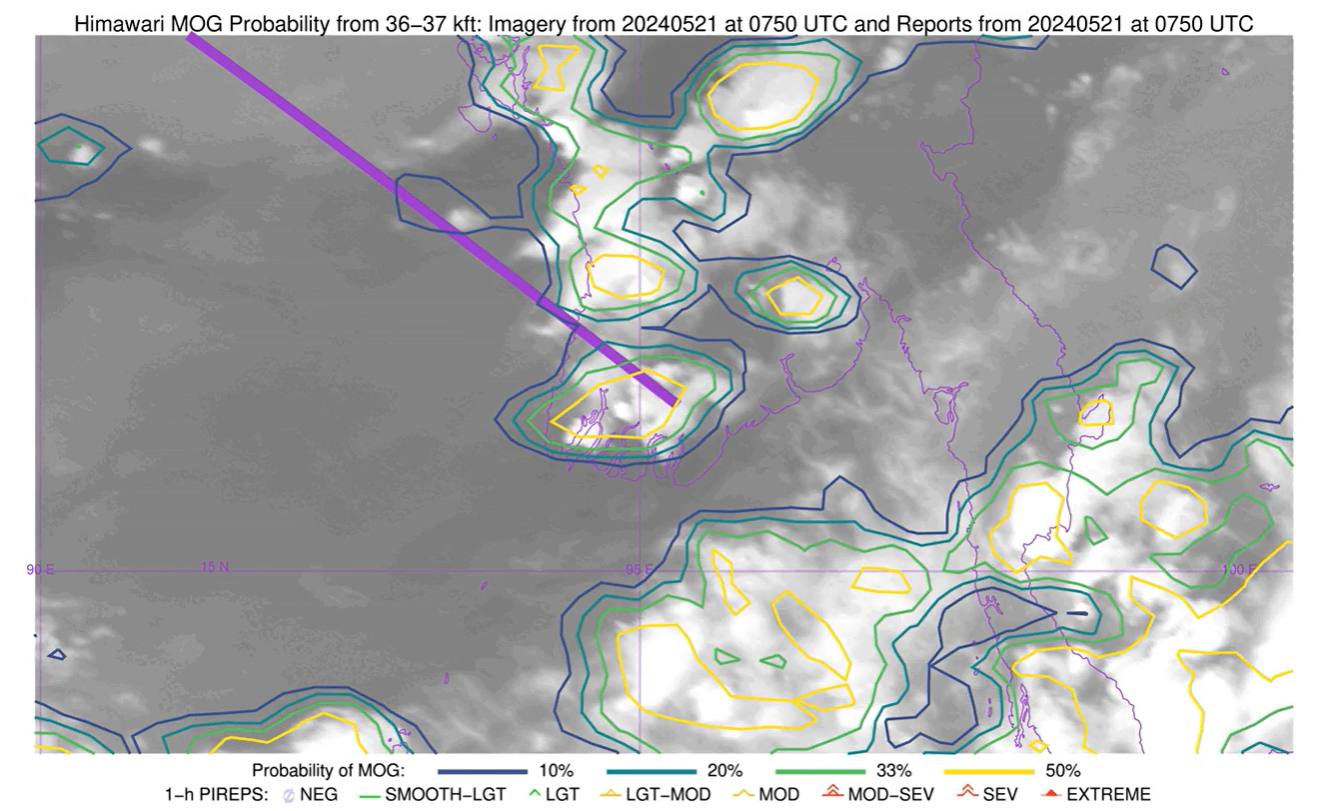
[ Archive ]

 |
CIMSS-NOAA Weekly Report [ Archive ] |
 |
CIMSS-NOAA WEEKLY HIGHLIGHTS FOR THE WEEK ENDING MAY 24, 2024
DATA, INFORMATION, AND USE-INSPIRED SCIENCE:
CIMSS helping prepare for GOES-U Post Launch Test: Researchers from The Cooperative Institute for Meteorological Satellite Studies (CIMSS) and NOAA/STAR at the University of Wisconsin (UW)-Madison raised issues concerning preparedness for the upcoming GOES-U Post Launch Test (PLT). CIMSS reviewed look-up tables (LUTs) for converting radiance to brightness temperature and raised questions about the brightness temperature range for several bands, most notably the 3.9um band 7, which has a LUT that does not go hot enough to cover the range of expected values for the band. Also CIMSS obtained test GOES-19 data that did not contain the needed conversion coefficients for the visible/near-infrared (VNIR) bands. These issues were raised at the weekly GOES-R Calibration Working Group (CWG) meeting May 22 and are being addressed so the system will be prepared for GOES-U first light imagery, scheduled for August. (M. Gunshor, CIMSS, matg@ssec.wisc.edu, & T. Schmit, E/RA2, 608-263-0291, tim.j.schmit@noaa.gov).
FUTURE OUTLOOK:
AWARDS AND RECOGNITION:
TRAVEL AND MEETINGS:
ARPA-E Energy Innovation Summit: Researchers from the University of Wisconsin-Madison's Space Science and Engineering Center (SSEC) and the Cooperative Institute for Meteorological Satellite Studies (CIMSS) participated in this week's Advanced Research Projects Agency - Energy (ARPA-E) Energy Innovation Summit. Attendees shared insights on breakthroughs in renewable energy, grid resilience, energy storage solutions, and more. The primary focus at SSEC is on refining a technique to detect aircraft-induced cirrus (AIC), also known as contrails, in satellite imagery. The ultimate objective is to forecast conditions favorable for contrail development, aiming to mitigate the climate change impacts from the aviation sector by redirecting aircraft away from regions prone to contrail development. (J. Hoffman, CIMSS, 608-890-1690, T. Wimmers, CIMSS, 608-263-3294)
TRAINING AND EDUCATION:
MEDIA INTERACTIONS AND REQUESTS:
SOCIAL MEDIA AND BLOG Posts:
SSEC and CIMSS Scientists in the news: Scientists at the University of Wisconsin-Madison (UW) Space Science and Engineering Center (SSEC) and the Cooperative Institute for Meteorological Satellite Studies (CIMSS) provide expert interviews, imagery and case studies to promote science and satellite imagery. This week: 1. CIMSS Director Tristan L’Ecuyer spoke with several news outlets in anticipation of the PREFIRE launch scheduled for May 25 from New Zealand. “Rocket Lab to launch satellite to monitor Earth's polar regions”, Radio New Zealand; “NASA's PREFIRE mission is ready to unlock the mysteries of Earth's poles”; “NASA’s new mission to study polar regions’ heat loss to launch on May 22: All you need to know”; “Twin NASA satellites aim to study heat emissions at Earth’s poles, improve future climate models”. 2. CIMSS Satellite Blog contributors Scott Bachmeier and Scott Lindstrom published the following case studies: "Direct Broadcast data at WFO Guam as a vital component in monitoring tropical cyclones" (May 23); "PHS model output during Day 3 of Week 2 at HWT" (May 22); "Singapore Airlines Flight SQ321 encounters severe turbulence" (May 21); “PHS model output during Day 1 of Week 2 at HWT" (May 20); "Severe thunderstorms across Kansas" (May 19); "30-second images of thunderstorms that produced tornadoes and damaging winds (with some fatalities) in the Houston, Texas area” (May 16); “Blowing dust in West Texas" (May 16). Read more at the CIMSS Satellite Blog. (S. Lindstrom, CIMSS, 608-263-4425; S. Bachmeier, CIMSS; E. Verbeten, SSEC, 608-263-4206)
 (Click image to enlarge)
(Click image to enlarge)
Figure: CIMSS Moderate-or-Greater (MOG) Turbulence at 0750 UTC on 21 May 2024, about when Singapore Airlines Flight SQ321 encountered severe turbulence; the plane's path is approximated by the purple line.
PUBLICATIONS:
OTHER:
| Archived Weeklies Page | Submit a report item |